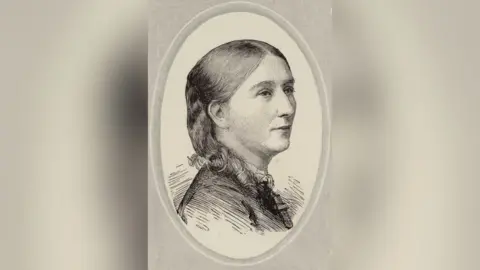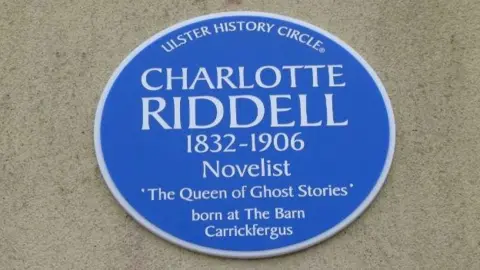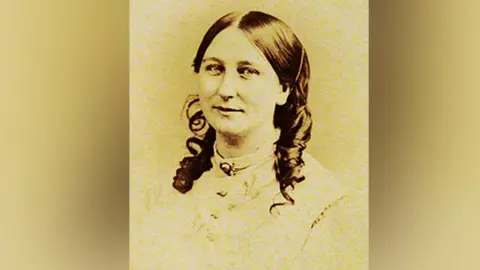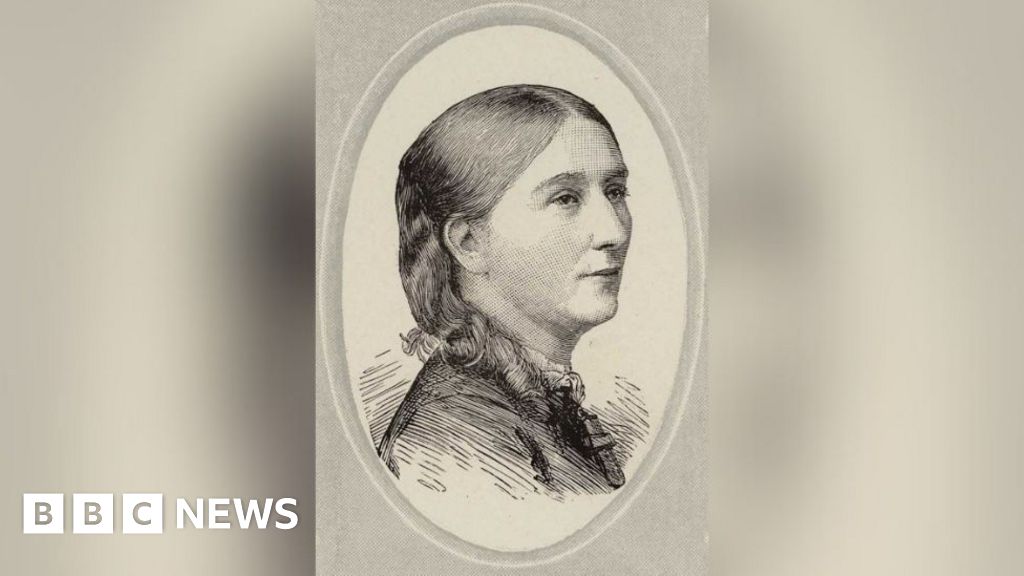 Ulster History Society/PA Wire
Ulster History Society/PA Wire
Charlotte Riddell was one of the most successful gothic authors of the Victorian era
Spine-chilling novels have captured our imagination for centuries, but it was County Antrim-born Charlotte Riddell who was known as the The Queen of Ghost Stories.
Across her lifetime, from 1832 to 1906, she published more than 50 novels and short stories which often explored moral ambiguity and tapped into an obsession with the supernatural in the Victorian age.
Now, more than 100 years after her death, she has been honoured with a blue plaque in her hometown of Carrickfergus.
Historian Dr David Hume believes she was “well ahead” of Gothic literature and on par with fellow Irish writers Bram Stoker and Sheridan Le Fanu, who were behind the genre-shaping novels Dracula and Carmilla respectively.
 Ulster History Circle
Ulster History Circle
She has been honoured with a blue plaque in her hometown of Carrickfergus
“She’s just a fantastic writer,” he told BBC News NI.
“Her plots are very good, her characterisation is very good, her use of suspense within her novels is really good too. She was quite an amazing figure.”
Riddell was born Charlotte Cowan at The Barn in Carrickfergus, where Carrickfergus Hospital now sits, to mill-owner James Cowan and Ellen Kilshaw, who was from Liverpool.
Her early works drew inspiration from her surrounding landscape, including stories like Tales From Boneybefore, based on a nearby village.
Following the death of her father when she was a teenager, her mother and her were left with very little money and forced to move to a cottage in the Craigantlet hills in County Down.
Determined to become a published author and provide for them both, she moved to London with her mother in the hope of attracting publishers.
Her gender proved to be a barrier in a male-dominated field but she got her first novel, The Moors and the Fens, published in the late 1850s under the pseudonym F.G. Trafford.

Dr Hume says she was an “amazing role model”
Dr Hume hailed her as an “amazing role model” who was determined to survive in a “very difficult time”.
“Women were not seen as people who go out there and economically they would survive themselves, and they would do all these things that she did. Everything was a male preserve, very largely,” he added.
She went on to marry Joseph Hadley Riddell, a civil engineer who worked in the City of London, where she learnt the inner workings of the capital.
This world became the basis for many of her ghost stories which were often set in haunted houses and explored the dangers of greed.
 Public Domain
Public Domain
The author’s stories often explored moral ambiguity and an obsession with the supernatural in the Victorian age
Dr Hume says while her early work was “quite pleasant”, her later novels had “not too happy endings”.
“That probably reflects on the fact that life had changed and become quite precarious, quite different for her – and her way through that was her skill as a writer,” the historian said.
Chairman of the Ulster History Circle, Chris Spurr, said the heritage organisation was “delighted” to honour the “once-popular and prolific writer” with a blue plaque at Carrickfergus Library.
Dr Hume described the recognition for Charlotte Riddell as “fantastic” and hopes “new generations will come to understand how important she is in terms of this genre of writing”.


